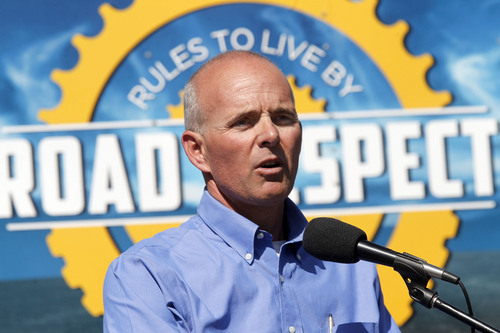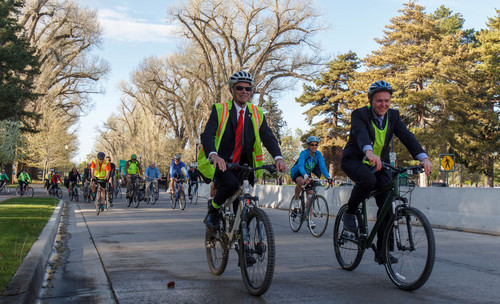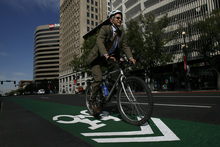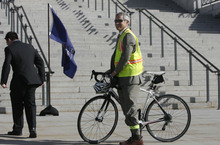This is an archived article that was published on sltrib.com in 2014, and information in the article may be outdated. It is provided only for personal research purposes and may not be reprinted.
Residents in Salt Lake City, Provo and Logan are four to seven times more likely than typical Americans to bike to work.
Still, only a tiny fraction of them do so — 4.1 percent of workers in Logan, 3.1 percent in Provo and 2.5 percent in Salt Lake City, according to a report released Thursday by the U.S. Census Bureau.
Nationally, just 0.6 percent of workers bike to work, based on survey data for 2008-12.
Among what the Census calls "mid-size" cities with populations between 100,000 and 200,000 residents, Provo's cycling rate ranked ninth highest in the nation and Salt Lake City was 11th.
The report said cycling to work jumped by 60 percent nationally during the past decade.
Brian McKenzie, its author, said the increase came as "many cities have invested in bike-share programs, bike lanes and more pedestrian-friendly streets."
That has become more of a focus recently in Utah.
For example, Carlos Braceras, new director of the Utah Department of Transportation, who is an avid biker, recently changed agency policy to ensure that all new projects are more friendly to nonmotorized traffic.
"Needs of bicyclists, pedestrians and other active transportation users will be routinely considered as an important aspect in the funding, planning, design, construction, operation and maintenance of UDOT transportation facilities," the policy he pushed says.
UDOT in recent years has done things such as include trails for cyclists and walkers along big projects, including Legacy Parkway and the Mountain View Corridor, and more recently has pushed even small projects to make "active transportation" easier.
Salt Lake City has done likewise — such as remodeling North Temple when the new airport TRAX line was built to include bike lanes and better sidewalks. The city in recent years has also added a bike-share program and launched an effort to make crosswalks safer.
University cities often had higher bicycling rates in the study. Logan, home of Utah State University, was the highest in Utah. Next highest were Provo, home to Brigham Young University, and Salt Lake City, locale of the University of Utah.
The report had data for cities with populations greater than 20,000. The Census estimated that no workers at all bicycled to work in two such Utah cities: Eagle Mountain and Herriman.
The report also had data on how many workers walk to their jobs.
In Provo, 14.5 percent of workers did — ranking third nationally among midsized cities. In Salt Lake City, 5.3 percent did. In Logan, it was 7.7 percent.
Some of the higher walk-to-work rates in other Utah cities were Cedar City, 5.6 percent; St. George, 3.2 percent; Murray and Cottonwood Heights, 2.9 percent each; Ogden, 2.7 percent; and Orem, 2.2 percent. —
Mid-size cities, biking to work
1. Boulder, Colo. 10.5 percent of workers bike to work
2. Eugene, Ore. 8.7 percent
3. Berkeley, Calif. 8.1
4. Cambridge, Mass. 7.2
5. Fort Collins, Colo. 6.8
6. Gainesville, Fla. 6.5
7. Tempe, Ariz. 4.2
8. Ann Arbor, Mich. 3.7
9. Provo, Utah 3.1
10. New Haven, Conn. 2.7
11. Salt Lake City 2.5
(Logan was No. 29 among small cities, 4.1 percent)
National Average 0.6 percent
Source: U.S. Census Bureau













